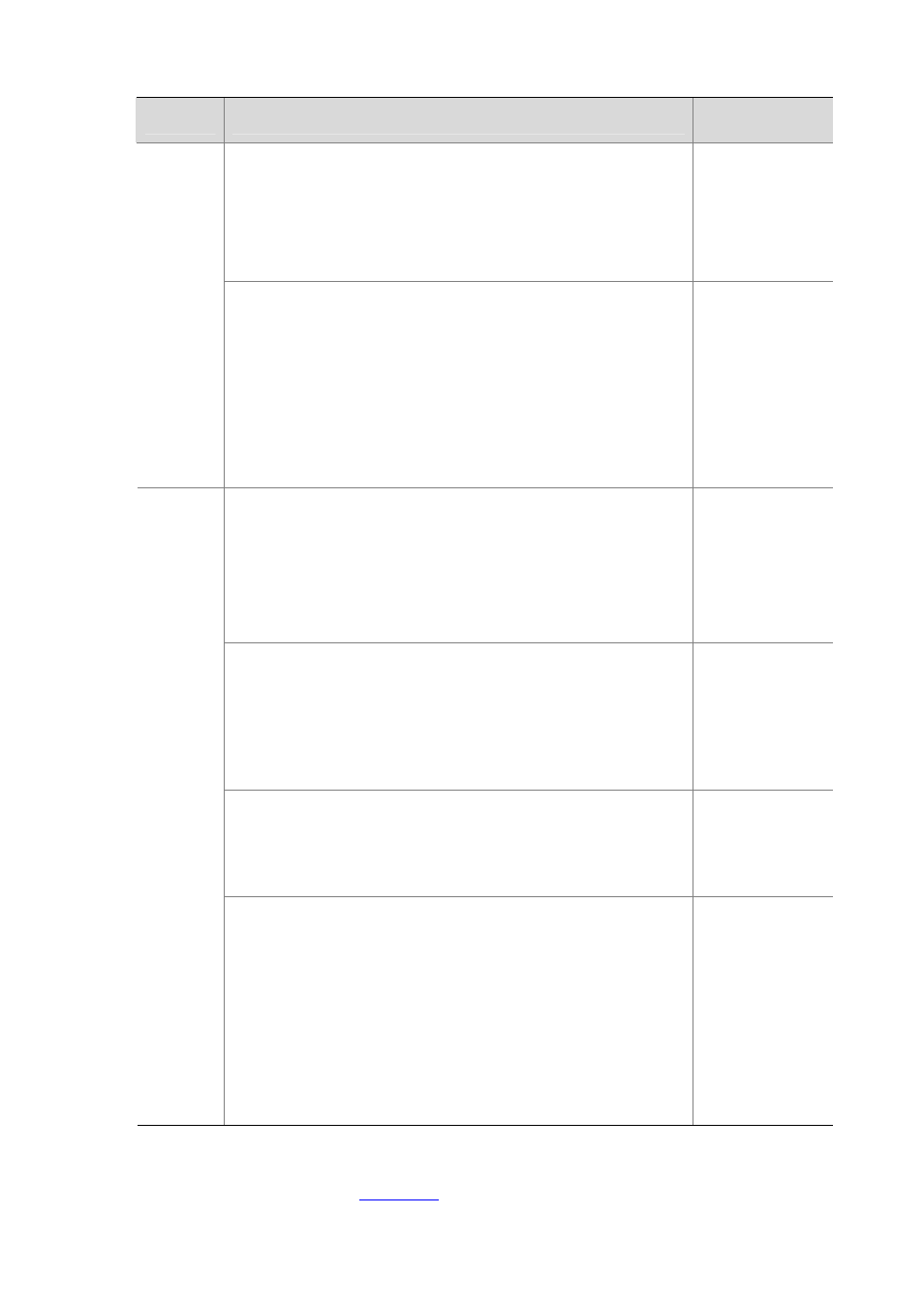H3C Technologies H3C WX6000 Series Access Controllers User Manual
Page 165

20-7
Device
Comparison process
BPDU of port after
comparison
z
Port BP1 receives the configuration BPDU of Device A {0, 0, 0, AP1}.
Device B finds that the received configuration BPDU is superior to the
configuration BPDU of the local port {1, 0, 1, BP1}, and updates the
configuration BPDU of BP1.
z
Port BP2 receives the configuration BPDU of Device C {2, 0, 2, CP2}.
Device B finds that the configuration BPDU of the local port {1, 0, 1,
BP2} is superior to the received configuration BPDU, and discards the
received configuration BPDU.
BP1: {0, 0, 0, AP1}
BP2: {1, 0, 1, BP2}
Device B
z
Device B compares the configuration BPDUs of all its ports, and
determines that the configuration BPDU of BP1 is the optimum
configuration BPDU. Then, it uses BP1 as the root port, the
configuration BPDUs of which will not be changed.
z
Based on the configuration BPDU of BP1 and the path cost of the root
port (5), Device B calculates a designated port configuration BPDU for
BP2 {0, 5, 1, BP2}.
z
Device B compares the calculated configuration BPDU {0, 5, 1, BP2}
with the configuration BPDU of BP2. If the calculated BPDU is
superior, BP2 will act as the designated port, and the configuration
BPDU on this port will be replaced with the calculated configuration
BPDU, which will be sent out periodically.
Root port BP1:
{0, 0, 0, AP1}
Designated port
BP2:
{0, 5, 1, BP2}
z
Port CP1 receives the configuration BPDU of Device A {0, 0, 0, AP2}.
Device C finds that the received configuration BPDU is superior to the
configuration BPDU of the local port {2, 0, 2, CP1}, and updates the
configuration BPDU of CP1.
z
Port CP2 receives the configuration BPDU of port BP2 of Device B {1,
0, 1, BP2} before the message was updated. Device C finds that the
received configuration BPDU is superior to the configuration BPDU of
the local port {2, 0, 2, CP2}, and updates the configuration BPDU of
CP2.
CP1: {0, 0, 0, AP2}
CP2: {1, 0, 1, BP2}
By comparison:
z
The configuration BPDU of CP1 is elected as the optimum
configuration BPDU, so CP1 is identified as the root port, the
configuration BPDUs of which will not be changed.
z
Device C compares the calculated designated port configuration
BPDU {0, 10, 2, CP2} with the configuration BPDU of CP2, and CP2
becomes the designated port, and the configuration BPDU of this port
will be replaced with the calculated configuration BPDU.
Root port CP1:
{0, 0, 0, AP2}
Designated port
CP2:
{0, 10, 2, CP2}
z
Next, port CP2 receives the updated configuration BPDU of Device B
{0, 5, 1, BP2}. Because the received configuration BPDU is superior to
its old one, Device C launches a BPDU update process.
z
At the same time, port CP1 receives configuration BPDUs periodically
from Device A. Device C does not launch an update process after
comparison.
CP1: {0, 0, 0, AP2}
CP2: {0, 5, 1, BP2}
Device C
By comparison:
z
Because the root path cost of CP2 (9) (root path cost of the BPDU (5)
plus path cost corresponding to CP2 (4)) is smaller than the root path
cost of CP1 (10) (root path cost of the BPDU (0) + path cost
corresponding to CP2 (10)), the BPDU of CP2 is elected as the
optimum BPDU, and CP2 is elected as the root port, the messages of
which will not be changed.
z
After comparison between the configuration BPDU of CP1 and the
calculated designated port configuration BPDU, port CP1 is blocked,
with the configuration BPDU of the port remaining unchanged, and the
port will not receive data from Device A until a spanning tree
calculation process is triggered by a new condition, for example, the
link from Device B to Device C becomes down.
Blocked port CP2:
{0, 0, 0, AP2}
Root port CP2:
{0, 5, 1, BP2}
After the comparison processes described in the table above, a spanning tree with Device A as the root
bridge is stabilized, as shown in
